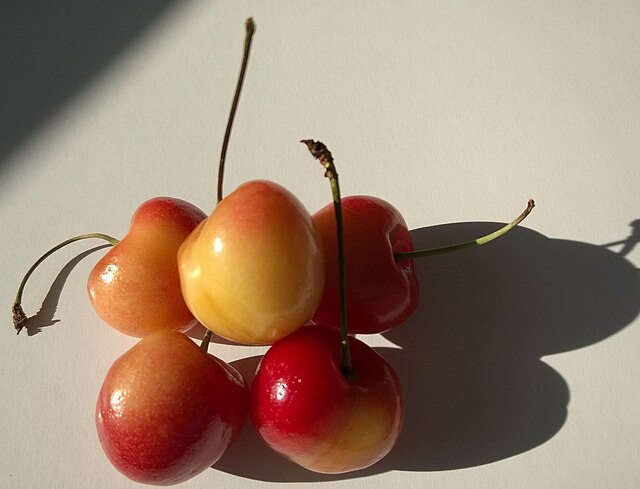Currently tariff-exempt Northwest sweet cherries (Prunus avium) might see summer 2025’s production reach 213,800 tonnes, a 10% annual increase.
Harvests will run June through August in Washington, Montana, Idaho, Oregon, and Utah in the Northwest, alongside Michigan.
This timing coincides with the stoppage period for the enforcement of “Trump’s tariffs” till end July 2025.
The top U.S.’ cherry import markets such as Canada, China and Mexico all have tariffs on hold. China, the second biggest import market, had taken its import tariffs to 135% against the U.S.’ 145% before the current moratorium.
Around 30% of the Pacific Northwest’s cherry crop ends up in international markets while 70% is homebound.
Key States Vs. Tariffs
With the 10% universal import tax on hold, cherry-producing states are heaving a sigh of relief.
One such is Michigan with its $36.5 million-strong cherry industry, as of 2022. Providing 75% of the American tart cherry harvest, Michigan was expecting significant duty impact amid rising production costs.
Another state is Washington, whose Yakima Valley and other hubs provide 2/3rds of the total federal sweet cherry crop.
After steering through the pandemic years and a heat emergency in 2023, Washington is finally ramping up production with no tariff cloud.
According to the Northwest Cherries organization, the regional crop inclusive of Washington’s could reach 231,800 tonnes, above 2024’s 200,563 tonnes.
Low California Competition
Additionally, competition from California has transitioned better this year than in 2024, after the harvest began early enough in April.
Northwest Cherries puts the wrapping up sweet cherry harvest in the Golden State at 54,000 tonnes.
California’s harvest is also relatively small this season and so it won’t overlap the marketing season in the Northwest.
Northwest cherries are therefore spot on a strong marketing season that has luckily fallen inside the tariff moratorium. To learn more on the industry, read on the statistics section below.
Pacific Northwest Cherries Statistics
The United States produces both Prunus avium or sweet cherries and P. cerasus or sour cherries. The Pacific Northwest exclusively produces the P.avium variety and accounts for around 90% of the federal harvest. Michigan, on the other hand, is the single biggest P. cerasus source, accounting for 74% of the federal total. Washington tops the Northwest production of sweet cherries at 443,640 tonnes, as of 2021.
What is the cherry acreage in the Pacific Northwest?
According to the Northwest Horticultural Council, the northwest U.S. had 50,000 acres under cherries against nationwide 87,000 acres.
How has production and exports performed in recent years in the Northwest?
Between 23 and 35.2% of the total sweet cherry production in the Northwest is usually for export. According to the Northwest Horticultural Council, in the 2015-2024 period, 2017 had the highest production at 26,432,194 20-pound cartons. Out of this total, 35.2% hit the export market, the highest for the 10-year period.
Are there key export markets for Northwest cherries?
Canada was the biggest export market for Northwest’s cherries in 2024, at 2,202,860 20-pound cartons. Next was China with 801,360 cartons while Taiwan, Korea, Mexico, Vietnam and Japan followed suit.
